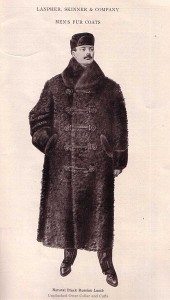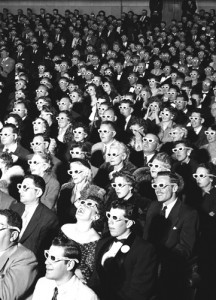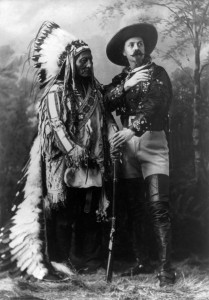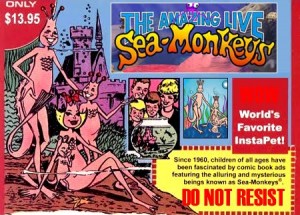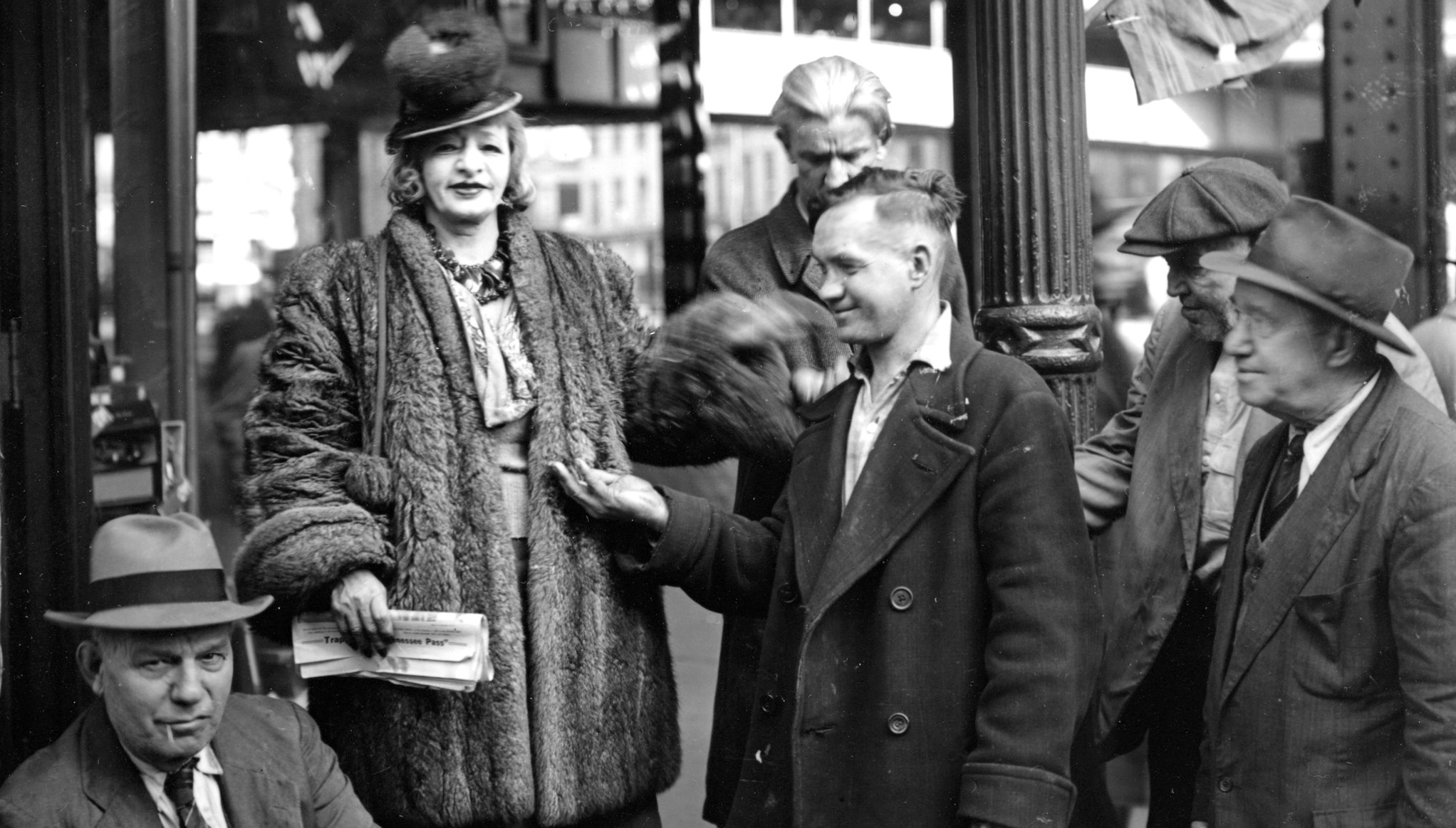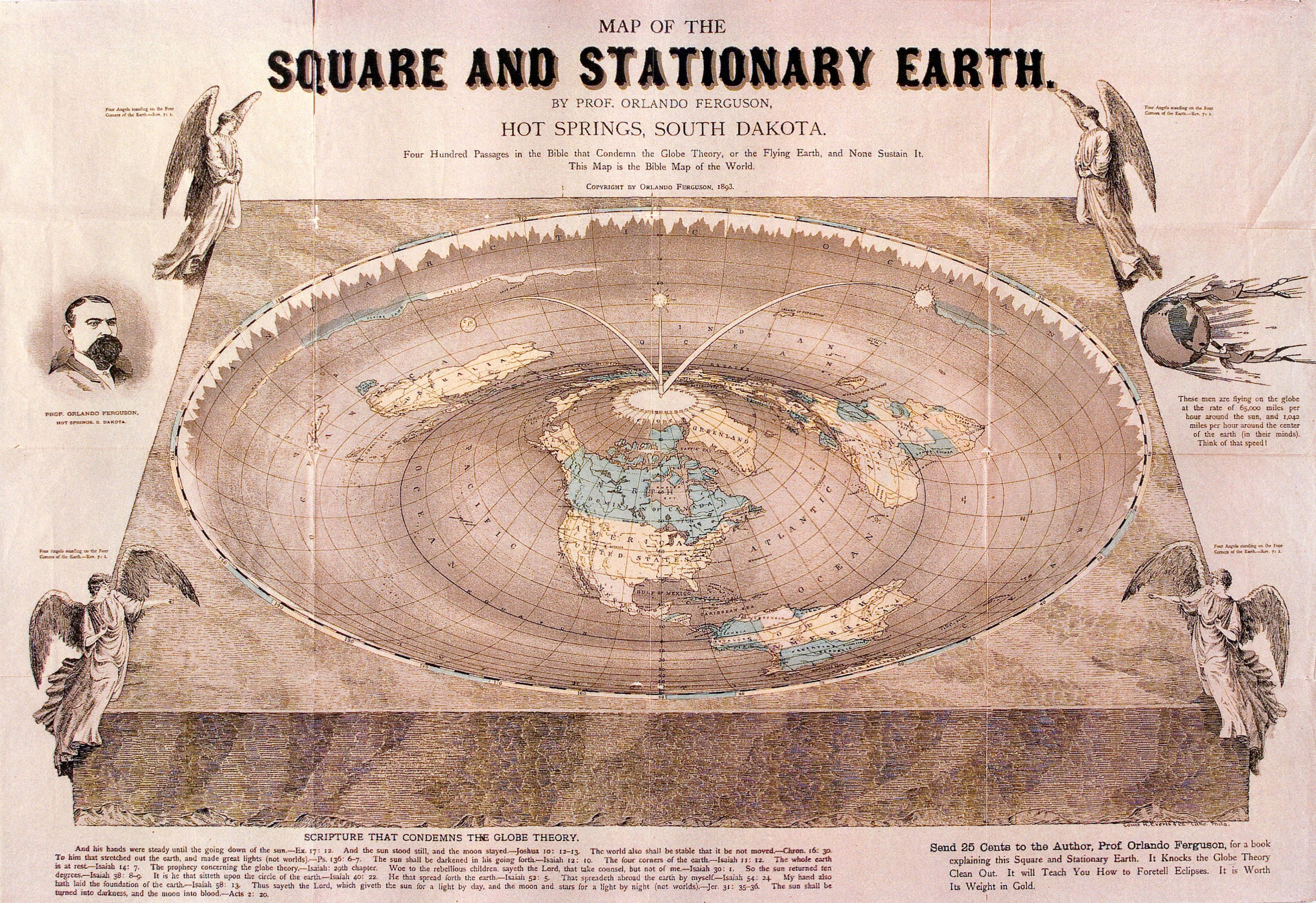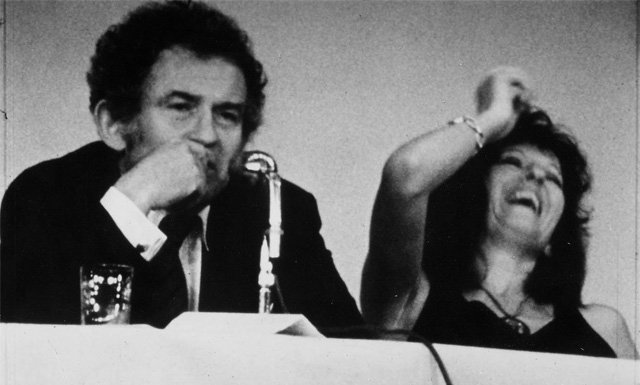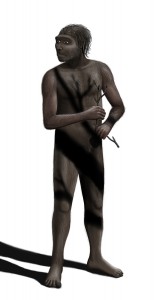Death by clowning is now the third leading killer of Americans, trailing only brain fat and monkey bites. (Thanks Found Footage Festival.)
MIT is building mind-control helmets for mice, hoping to eventually have domain over brain functions in humans in order to control disease. An excerpt from a Discover article:
“Christian Wentz from MIT has designed a hat that wouldn’t look out of place at a horse race or a royal wedding. It consists of two circuit boards and an antenna, and it’s being modelled by a mouse. Wentz has wired the hat directly to the mouse’s brain and he can use it to control the animal’s behaviour with flashes of light. And most importantly, he can do it from afar.
The wireless helmet is the latest innovation in the exciting field of optogenetics, where scientists can use light to control the behaviour of both cells and entire animals. The typical set up involves loading cells – usually neurons – with a light-sensitive gatekeeper protein. When the protein sees the light, it opens up and allows ions to enter the neuron, making it fire.
By introducing the proteins into the right spot, scientists can switch on specific parts of the brain, or even individual neurons. They can turn on aggressive or sexual behaviour or make animals walk in circles. The technique promises to revolutionise our understanding of the way the brain works. It could even help to develop treatments for diseases.”
Tags: Christian Wentz
Springer, Russian-style. Kick to bride’s stomach early. (Thanks Reddit.)
The tennis player Renée Richards caused a sensation in 1976 when she revealed that she had been born a man and undergone a sex-change operation. She was quickly lambasted by critics who thought she had an unfair advantage over her female opponents, but it seemed like an excuse to unload on someone who made much of America uncomfortable. Michael Weinreb of Grantland has a smart new interview with Richards, who is today a septuagenarian Manhattan opthamologist conflicted about being a public figure. An excerpt:
“‘No, no, no, no,’ she says now, at age 76, sitting in her cozy examining room. Her voice is a rasp; her sweater is pink. She is surrounded by autographed photos of Martina Navratilova and Virginia Wade. ‘That was not my intention. It’s not so much the idea that I wanted to be a pioneer and a standard-bearer. It was a much more selfish reason. I’d gone through such an upheaval in my life, and they’re telling me I can’t play tennis? Suddenly I said to myself, ‘I can do anything any other woman is entitled to do. How dare they?’
‘I was a quiet person. I mean, I’m not a shrinking violet, but I was a very private person. I was very well-liked, and I was very well-respected. And a lot of that was thrown away because I became a caricature, a public notorious figure. I was undressed in front of the world.'”
••••••••••
A new documentary about Richards:
The opening of the September 6, 1976 Sports Illustrated article about the Richards revelation: “At first, it seemed like a put-on. A transsexual tennis player? A 6’2” former football end in frilly panties and gold hoop earrings pounding serves past defenseless girls? A 42-year-old Yale graduate, Navy veteran, devoted father and respected eye surgeon reaching the semifinals of the $60,000 Tennis Week Open in South Orange, N.J. and demanding to play in the U.S. Open at Forest Hills? In women’s singles? Who ever heard of such a thing?
In the past month, practically everyone. And certainly last week there was no escaping the extraordinary spectacle of Renee Richards, nee Richard Raskind, and her assertion that ‘anatomically, functionally, socially, emotionally and legally I am a female.’ While conceding that her action might be ‘mind-boggling,’ Richards proclaims that she is embarked on a crusade for human rights, a quest ‘to prove that transsexuals as well as other persons who are fighting social stigmas can hold their heads up high.’
If tennis seems a rather fragile or inappropriate vehicle for carrying such a weighty message, it nonetheless provides, as Richards is well aware, the kind of exposure that attracts disciples. After one match last week, Dr. Roberto Granato, the urologist who performed the ‘sex-reassignment operation’ on Richards a year ago, rushed onto the court, embraced his former patient and exclaimed, ‘Oh, Renee, this is going to help so many people!’
Not everyone is so enthralled.”
Tags: Michael Weinreb, Renée Richards
Howard Anderson, a.k.a. Andrew Andrews, was a fin-de-siècle British-born burglar run amok in New York City, a second-story man with sticky fingers and a ready alibi. He resolutely lived the grifter’s life, as the following story from the January 10, 1901 Brooklyn Daily Eagle illustrates. An excerpt:
“Howard Anderson, alias Andrew Andrews, 44 years old, said by the police to be an English crook, was arraigned before Magistrate Meade in the Harlem Police Court to-day as a suspicious person. At 1 o’clock this morning Policeman Powers of the East One Hundred and Twenty-sixth street and Third Avenue with a bundle. Powers asked the man what he had. Anderson said that he was a purchaser of pawnbroker’s tickets and had just takent something out of a pawn.
Powers took the man to the station and the bundle was found to contain a coat trimmed with Persian lamb’s wool and two shot guns. The Sergeant happened to have at the station a police alarm relative to the burglary of the summer home of Charles W. Dickel, who keeps a riding school in Fifty-sixth street, between Sixth and Seventh Avenues, and who has his summer home at Scarsdale, which is just beyonmd White Plains.
On the night of January 2 last Dickel was awakened by hearing some one move about the house. He went through the house and scared the burglar off, but he had gotten away with the coat and two shotguns.
 So soon as the articles were identified Chief of Police Carpenter of White Plains was notified and he came to this city. He was in court when Anderson was arraigned.
So soon as the articles were identified Chief of Police Carpenter of White Plains was notified and he came to this city. He was in court when Anderson was arraigned.
Detective Frank Prince, who was in court identified Anderson as Howard Andrews, a well known English crook and worker of suburban houses and second story thief . Detective Prince said he had served six and a half years of a ten years’ sentence for stealing $10,000 worth of silverware from a millionaire’s residence in Hmepstead, L.I.
Magistrate Meade dismissed the case against Anderson and turned him over to Chief Carpenter of White Plains, warning Caroenter to look out and not let him go.”
In addition to the elimination of late fees and a long-tail inventory, Netflix was a category killer for video stores because it offered a flat-fee buffet-style arrangement. Yes, there was “toggling” that delayed the heaviest users from seeing the most desirable movies first, but you got quantity and quality for your money. In a new Wired.com article, Angela Watercutter looks at how theater chains are introducing a similar model to try to increase profits:
“MoviePass, a new $50-per-month service for film fans, will let subscribers watch unlimited movies in theaters using their smartphones as tickets.
Using an HTML5 application (native smartphone apps coming soon), MoviePass will let users search for a film, find a local show time, check in to the theater and go straight to the ticket-taker.
The all-you-can-watch service, announced Monday with a private beta starting in the San Francisco Bay Area just in time for the Fourth of July blockbuster weekend, is looking to shake up the theater business in much the same way Netflix has changed the DVD-rental game.
‘Even with online ticketing, this side of the business is still a 75-year-old business and there’s not a lot of innovation,’ MoviePass co-founder Stacy Spikes said in an interview with Wired.com. ‘Getting your tickets, how you do that, how you interact with the theater, how you interact with the studio, none of that has really changed. We’re giving the viewer a lot more power and also allowing [studios and moviegoers] to speak with each other.'”
Tags: Angela Watercutter
While I have never had any interest whatsoever in J.R.R. Tolkien’s work–as a child or adult–I know I’m in the small minority. For the rest of you. (Thanks Open Culture.)
Tags: J.R.R. Tolkien
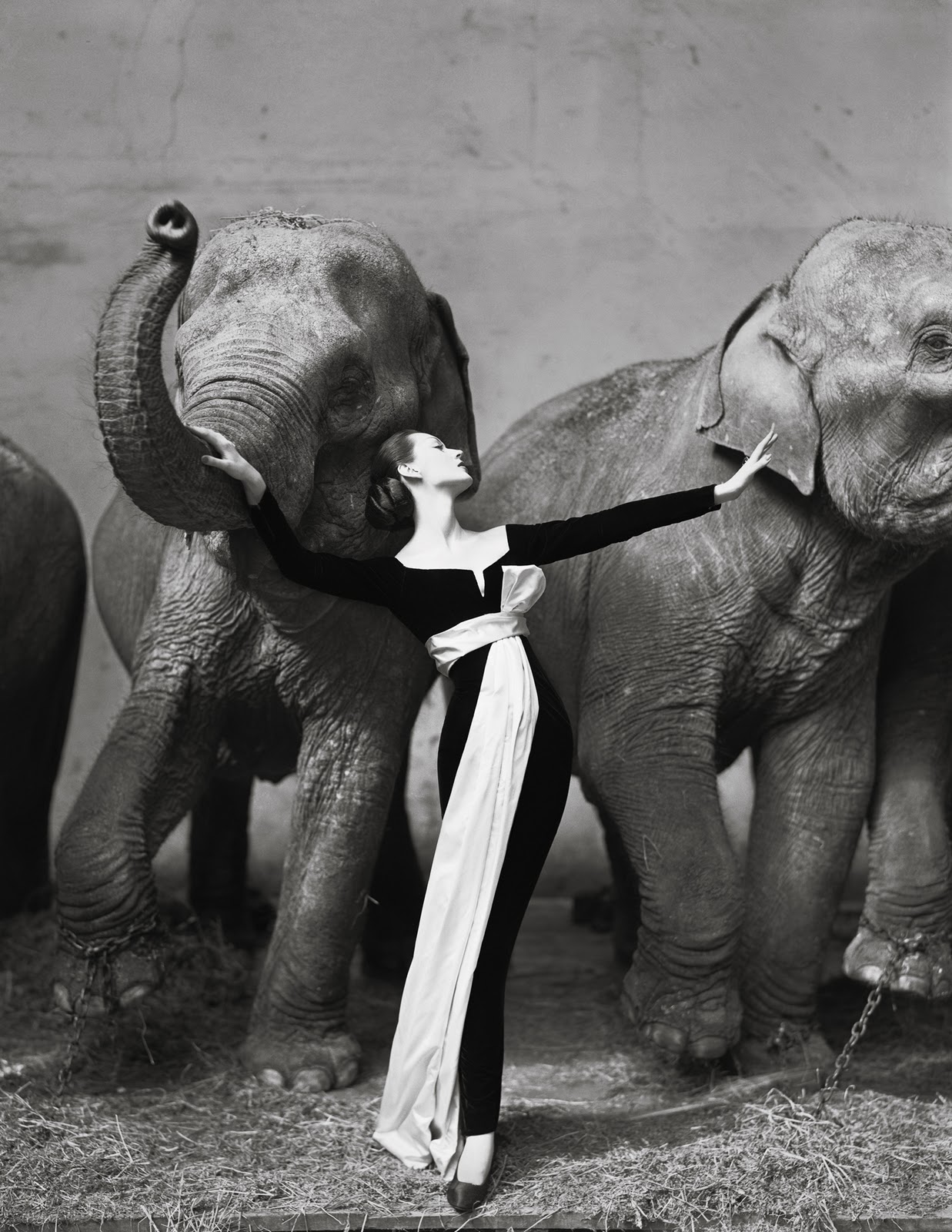 From Winthrop Sargeant’s 1958 New Yorker profile of a young Richard Avedon, who used his camera to reimagine the fashion photograph, which lacked blithe spirit before he enlivened the scene:
From Winthrop Sargeant’s 1958 New Yorker profile of a young Richard Avedon, who used his camera to reimagine the fashion photograph, which lacked blithe spirit before he enlivened the scene:
About twelve years ago, this approach to fashion photography began to be subtly undermined by a sprightly and ingenious photographer for Harper’s Bazaar named Richard Avedon. As far as he was concerned, the statues and mummies went out the window. The model became pretty, rather than austerely aloof. She laughed, danced, skated, gambolled among herds of elephants, sang in the rain, ran breathlessly down the Champs-Elysées, smiled and sipped cognac at café tables, and otherwise gave evidence of being human. Whether she thereby sold more clothes is open to question. But the new trend certainly brightened the page of Harper’s Bazaar, and Avedon was widely conceded to have reached a previously unattained artistic level in fashion photography. A good deal of this accomplishment can be attributed to his imagination and resourcefulness in handling a camera, but some of it undoubtedly stems from the fact that his primary interest is not in fashion but in women.
The Avedon photograph—or, more broadly, the Avedon photographic style—has by now become a lively contribution to the visual poetry of sophisticated urban life. Nearly everybody is familiar with it, for it has long since overflowed the pages of Harper’s Bazaar and influenced the advertising in most of the slick-paper periodicals. It has been imitated by other photographers, but the imitations have seldom approached the animation of the originals; in any case, as soon as the imitators have mastered at least the surface elements of one of Avedon’s innovations, he has always popped up with some entirely new departure, for he has never been one to stand still. The world he depicts is an artificial one; his polished and rather romantic art flatly contradicts the bromide that the camera never lies. Avedon’s camera unquestionably lies, but it does so in such a poetic and ingratiating manner that the photographic fiction it produces has become a sort of folklore of the world in which fashionable elegance counts. The characters in this fiction are women of unbelievable beauty and grace, moving about in an environment that exists largely in the imagination. This is a composite of mists, glowing lights, the moods of nocturnal revellers, nostalgic memories of bars and gaming tables and theatres, and such ephemeral minutiae as the feeling of enchantment at the sight of a taxi in the rain whose door is opened to receive a suave and mysterious beauty, or the moment of gaiety when some lovely girl decides to throw dignity aside, or the magical second in which the casual motions of a beautiful woman are observed secretly across a restaurant table—all fragments of a metropolitan fairyland, glimpsed by ordinary mortals only at times of heightened illusion.•
_______________________________
In 1999, Avedon is interviewed by that agreeable robot Charlie Rose.
Tags: Richard Avedon, Winthrop Sargeant
The aura of the American West was created and commodified long before there was a Hollywood, as traveling stage shows brought an appealing version of gunslinging to the masses. From Rob Walker’s 2007 Sunday Times Magazine article about how Buffalo Bill Cody packaged himself for the millions:
“While still a scout for the United States Army, Cody managed to hire himself out as a sort of celebrity hunting guide for well-to-do visitors to the American West. In 1869, when he was about 25, he impressed a writer calling himself Ned Buntline, who began a series of dime novels starring Buffalo Bill. These inspired a play, with Cody himself in the lead role. For the next several years, Cody switched off between actual scouting work in campaigns against Plains Indians — and appearing in plays with names like Scouts of the Plains.
But the great branding event of his career came in 1876, in the wake of George Custer’s disastrous defeat by Sioux Indians at Little Big Horn. Weeks later, Cody’s regiment engaged in a battle against a group of Cheyenne Indians, and Cody — there’s some disagreement on this — apparently killed one, obtaining what he pronounced ‘the first scalp for Custer.’ That fall, Cody starred in the play based on the incident. And by 1883, he and a couple of key collaborators — notably Nate Salsbury, a manager with wonderful showbiz instincts — had invented a show that ‘provided the template . . . for the early film western,’ Joy S. Kasson argues in her 2000 book Buffalo Bill’s Wild West: Celebrity, Memory and Popular History. In the process, she writes, his Wild West ‘became America’s Wild West.’ Indeed, thanks to Salsbury, they actually copyrighted the phrase ‘Wild West’ (after a lengthy legal battle with rivals).
Live animals and blazing guns made the show more of a spectacle than a mere stage play. But a loose narrative and the vaguely educational content made it more respectable than a circus or a medicine show, and Salsbury kept gambling and drinking off the premises to attract the family demographic. At its height, the show included the sharpshooting of Annie Oakley, dramatic re-enactments of an Indian attack on the Deadwood stagecoach and a version of Little Big Horn. The organizers managed to include many actual Native Americans in the cast, including the Sioux chief Sitting Bull himself for part of its 1885 season.
Still, the authenticity was always balanced against affirmation: Cody’s arrival on the scene in the immediate aftermath of the re-enacted version of Little Big Horn converted a debacle into what felt like a victory. ‘It’s not really wild — that’s why it can be entertaining,’ Kasson, a professor of American studies at the University of North Carolina, Chapel Hill, told me. ‘That’s where it leads to Hollywood: the idea that you can give people the feeling of danger, but it’s got to be basically tame.’ In several tours of Europe, the general theme of civilization triumphing over savagery went over well. (Indeed, Kasson cites the historian Richard White’s point that the Wild West shows essentially recast encroaching settlers as victims.) By the time Frederick Jackson Turner momentously declared that ‘the frontier has gone’ at the Columbian Exposition in 1893, Buffalo Bill’s Wild West was in the midst of a monthslong stint right across the street; it was seen by an estimated six million people.”
••••••••••
Edison captured the pageantry of the Buffalo Bill’s Wild West Show parade:
Another Buffalo Bill Cody post:
Tags: Buffalo Bill Cody, Rob Walker
Judging by his last two films, Happy-Go-Lucky and Another Year, Mike Leigh has quietly become one of the most effective horror film directors in the world, though, of course, not in any typical sense. Always fond of grotesque caricature, Leigh has upped the ante even further recently, finding life at its cruelest, homing in on those deluded by dreams and those who have none, and playing with their wounds.
In Another Year, Tom and Gerri (Jim Broadbent and Ruth Sheen) are a long-married British couple who surround their lives with an assortment of tormented souls. Sure, they can’t get away from their depressing relatives, including Tom’s drunk, taciturn brother Ronnie (David Bradley) and combustible nephew Carl (Martin Savage), but they seem to invite sad-sack friends into their lives not entirely due to kindness but to reassure themselves of their middle-class contentedness. Their son, Joe, who seems similarly to tolerate those who increase his own self-worth, is hit on repeatedly by Gerri’s middle-age alcoholic friend, Mary (Lesley Manville). Neither encouraging nor discouraging, he stoically allows Mary to lavish attention on him, which can bring no good to her.
Introduced into this backdrop is Joe’s new girlfriend, Katie (Karina Fernandez), an ebullient young woman who’s full of life, essentially the polar opposite of Mary’s pathetic hopelessness. Like the character of Poppy in Happy-Go-Lucky, who was described by most critics as “spirited” or “bright” rather than clueless, which is what she is, Katie’s enthusiasm is heightened to the point of insensitivity, almost without regard for others. Despite working as an occupational therapist, which you would assume would giver her a perspective beyond herself, she has none. Late in the film, she and Joe discuss a romantic trip abroad together in front of Mary, who’s more broken than usual. As the depressed woman endures a massacre of dashed hopes, Joe and Katie make it clear that they will become just like his parents. It’s almost sinister.•
Recent Film Posts:
- Classic Film: The Truman Show (1996)
- Classic Film: Salesman (1968)
- Classic Film: Night of the Living Dead (1968)
- Classic Film: The Conversation (1974)
- Classic Film: King of Comedy (1982)
- Recent Film: Dogtooth
- Classic Film: RoboCop (1987)
- Recent Film: Marwencol (2010)
- Classic Film: Being There (1979)
- Classic Film: Woman in the Dunes (1964)
- Classic Film: The Man in the White Suit (1951)
- Classic Film: Smile (1975)
- Classic Film: 8 1/2 (1963)
- Classic Film: Zelig (1983)
- Classic Film: Fahrenheit 451 (1966)
- Recent Film: Waste Land.
- Classic Film: Westworld (1973)
- Classic Film: F for Fake (1974)
- Strange, Small & Forgotten Films: Little Murders (1971)
- Classic Film: The Passenger (1975)
- Classic Film: The Man Who Fell to Earth (1976)
- Classic Film: Fast, Cheap & Out of Control (1997)
- Strange, Small & Forgotten Films: Decasia: The State of Decay (2002)
Tags: David Bradley, Jim Broadbent, Karina Fernandez, Lesley Manville, Martin Savage, Mike Leigh, Ruth Sheen
Sea-Monkeys don’t actually play volleyball, not even a little, but Evan Hughes of the Awl has an excellent post about the Insta-Pet’s late creator Harold von Braunhut, a Jewish man who had surprising ties to Aryan supremacists. An excerpt:
“An Assistant U.S. Attorney, Thomas M. Bauer, told the Washington Post that in a 1985 weapons case against a member of the Ku Klux Klan, Grand Dragon Dale R. Reusch, von Braunhut was prepared to testify that he had lent Reusch about $12,000 so he could buy 83 firearms. Bauer told the reporter that von Braunhut was ‘very pleasant and cooperative’ and ‘brought some of his little toys along,’ including Sea-Monkeys.
The general Aryan Nations view holds that Jewish people are directly descended from the devil. It seems clear that von Braunhut, who owned Nazi memorabilia and once said Hitler ‘just got bad press,’ signed on to these beliefs. But one has to wonder what brought him to the point of nodding along when his friend Butler, for instance, described Jews as ‘the bacillus of the decomposition of our society.’ Aryan Nations members might have been dismayed to hear that von Braunhut engaged a law firm called Friedman and Goodman early in his career. They might also have been puzzled that his name was listed on early patents as Harold N. Braunhut. The middle initial stands for Nathan. Harold von Braunhut was born and raised Jewish.”
•••••••••••
Tags: Evan Hughes, Harold von Braunhut
Sent aloft by a foam printer.
There’s apparently a controversy over whether the sound of money being dispensed at ATM machines–the pleasing noise of bills being distributed rapidly one after another–is merely a sound effect. Brad Tuttle looks at the dispute in a Time post:
“The assumption most people jump to is that the sound is produced by rollers delivering the notes to the collection slot. In fact, the sound is an entirely artificial addition to the process.
The noise is produced by a speaker and purely included in the transaction to reassure you that your money is on its way. Without the added noise, the ATM would be practically silent with its moving parts on the other side of a brick wall.” (Thanks to Marginal Revolution.)
••••••••••
First ATM in America that dispenses gold:
Tags: Brad Tuttle
He needs one of those drinking straw caps filled with Bud and then he’s set.
One of my favorite Joseph Mitchell New Yorker pieces is the 1940 article, “Mazie” (subscription required), which profiles a doyenne of the Bowery, a movie-theater ticket seller who treated the riff-raff of the downtrodden strip with a mix of tough love and kid gloves. I recently found her 1961 obituary on the New York Times site. The opening:
Bowery Mourns Mazie Phillips, Faithful Friend of Derelicts–She Was “Over 21”–Mazie Phillips known as the “Queen of the Bowery,” died Monday in Lenox Hill Hospital after a long illness. She lived at 18 Monroe Street on the Lower East Side with her sister, Mrs. Jean Hallen, a widow, and always gave her age as ‘over 21.”
For more than 65 years, Mazie, a platinum blonde with a husky voice, passed out advice (“Go take a bath, you bum”) money (“That’s a real quarter now”) and sympathy (“You got the makins of a great man”) to every Bowery derelict who would pause and listen.
Mazie dispensed the advice, money and cheer day and night on the streets of the Bowery, and most particularly from behind a cashier’s cage at the theater on Park Row.
She was known and liked in the Bowery and yesterday, Harry Baronian of the Bowery News said there were men sitting on doorsteps, ignoring their tattered clothes and other discomforts and lamenting her death. Some drank to her memory, he added, as she had often done for others.
The “Gentlest Heart”
The children of the Bowery will miss her, too, in their own way. They looked for the lollipops she carried in her pockets and she looked for the children, enjoying the jest of first saying she had no more.
But why did she help those in the Bowery? Her sister said yesterday that there was no real reason, “she just had the gentlest, kindest heart of anyone.”
Mazie did not believe, however, that the men of the Bowery could be helped by organized charity.
“I’m not out to knock missions or such,” she once said, “but you aint goin’ to get a bum in a mission if there’s a gutter to sleep in.” But she denied a report that she had once lured some men out of a mission by waving a bottle of whisky outside.
Mazie Was Buying
“All I did,” she remarked, “was to go in the King Kong Saloon and pass out the word that the drinks was on me.”
It is not clear just when Mazie arrived in New York, but it was probably around 1890. She was born in Boston, and her sister recalled that Mazie was a “quiet, very demure little girl” when she left for New York.
Shortly after, she became a familiar, friendly face in the ticket-seller’s cage in front of the old Venice Theater at 207 Park Row, where the Bowery and Chinatown meet.•
A passage from the April 3, 1995 edition of Time magazine about the scary rise to prominence of Shoko Asahara, the nearly blind cult leader who poisoned Tokyo subways with Sarin gas in 1995 and currently awaits execution:
“By 1984, though, the future ‘savior’ began to find his niche. He set up a yoga school that proved to be quite successful. Even if a former student recalls that in those days ‘we were not followers but members,” the time was ripe for gurus. Japan’s galloping economic miracle in the 1970s and ’80s also spawned a boom in ‘new religions’ offering spiritual refuge to Japanese alienated by materialism. Asahara’s messianic self-image expanded to help fill this void. After a visit to a Himalayan retreat, he boasted of having achieved satori, the Japanese term for nirvana or enlightenment. At this point he also claimed his first success at self-levitation.
Asahara established his Aum Shinrikyo religion in 1987, and the movement even put up a number of candidates in the 1990 Lower House Diet elections; all of them lost. Not much later he began conferring on himself such titles as ‘Today’s Christ’ and ‘the Savior of This Century.’ His community branched out rapidly in Japan. Soon it had established some beachheads overseas–including the U.S. and Germany but notably Russia. Asahara once preached before a crowd of 15,000 in a Moscow sports stadium.
As his fortunes prospered, Asahara seems to have grown more reclusive and obsessed with danger. The religion, nominally Buddhist but really a hodgepodge of ascetic disciplines and New Age occultism, focused on supposed threats from the U.S., which he portrayed as a creature of Freemasons and Jews bent on destroying Japan. The conspiracy’s weapons: sex and junk food. The guru’s sermons predicted the end of the world sometime between 1997 and 2000, and began citing the specific peril of poison-gas attacks.”
••••••••••
“Someone or some group mounted a devastating posion gas attack this morning”:
Aum Shinrikyo anime:
Tags: Shoko Asahara
The Library of Congress has received the only copy extant of Orlando Ferguson’s 1893 Map of a Square and Stationary Earth, which was based on the Bible and envisioned our planet as a fixed and flat thing. You know, it attacked the “globe theory.” Click on the map below to see the large-scale-version. From The History Blog: “Don Homuth, a former North Dakota state senator and current resident of Salem, Oregon, will donate the sole complete copy of the Map of a Square and Stationary Earth by Orlando Ferguson to theLibrary of Congress. Homuth was given the map by his eighth-grade English teacher John Hildreth who had received it from his grandfather.”
Tags: Orlando Ferguson
the “cleaner” wants your adult magazines
your adult mags,,i.e…porn collections,,
those embarrassing magazines,books,movies
various equipment ect,ect,,,NOTHING is too “risque” for me to
take away..this is a serious add!..i can help you
guy’s or ladies out..if you need it gone contact me
“the cleaner”
Mailer joined Germaine Greer and other feminist advocates for a raucous panel discussion about women’s liberation at NYC’s Town Hall in 1971. D.A. Pennebaker was on hand to capture all the madness; the footage was edited years later into movie form by his wife, Chris Hegedus.
Tags: Chris Hegedus, Diana Trilling, Germaine Greer, Jacqueline Ceballos, Jill Johnston, Norman Mailer
Why is Homo Sapiens the only human species on Earth? Why did other species, Homo Erectus for istance, not make it? The BBC provides some answers:
“Yet Homo erectus was slightly bigger and more powerful than Homo sapiens, so why did we thrive when they did not? The most obvious answer is that we had bigger brains – but it turns out that what matters is not overall brain size but the areas where the brain is larger.
“The Homo erectus brain did not devote a lot of space to the part of the brain that controls language and speech,” said John Shea, professor of palaeoanthropology at Stony Brook University in New York.
‘One of the crucial elements of Homo sapiens’ adaptations is that it combines complex planning, developed in the front of the brain, with language and the ability to spread new ideas from one individual to another.’
Planning, communication and even trade led, among other things, to the development of better tools and weapons which spread rapidly across the population.
The fossil records suggest that H. erectus went on making the same basic hand axe for more than a million years.
Our ancestors, by contrast, created smaller, more sophisticated weapons, like a spear, which can be thrown, with obvious advantages when it comes to hunting and to fighting.”
This telling segment July 31, 1971 Huntley-Brinkley Report (which was Chet Huntley’s final broadcast) is a pretty tremendous capsule of ’60s youth culture run aground, as there are accounts of rock festivals cancelled, the Manson Family murder trial in progress and Berkeley police attempting to shutter communes. Young reporter Tom Brokaw handles the Berkeley story.
The opening of the December 19, 1969 Life report about the Manson murders: “Long-haired, bearded little Charlie Manson so disturbed the American millions last week–when he was charged with sending four docile girls and a hairy male acolyte off to slaughter strangers in two Los Angeles houses last August–that the victims of his blithe and gory crimes seemed suddenly to have played only secondary roles in the final brutal moments of their own lives. The Los Angeles killings struck innumerable Americans as an inexplicable controversion of everything they wanted to believe about the society and their children–and made Charlie Manson seem to be the very encapsulation of truth about revolt and violence by the young.”
Tags: Charles Manson, Chet Huntley, David Brinkley, Tom Brokaaw
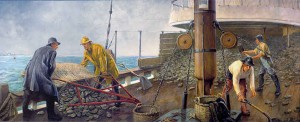
"Jacob Snyder, an oysterman living in Woodhaven, had a bitter experience on Jamaica Bay Thursday night." (Image by Alexander Rummler.)
When they weren’t busy collecting and selling shellfish, 19th-century oystermen were living dramatic lives, as the following trio of Brooklyn Daily Eagle articles demonstrates.
••••••••••
“A Bloody Affray–Murderous Assault of an Oysterman” (September 17, 1887): “At an early hour yesterday morning, John Graham, aged twenty-five years, of No. 53 Harrison Avenue, with two friends, visited the oyster saloon of Adam Christman, No. 416 Broadway, and asked for stews. When they were laid on the table Graham asked fror more butter, which Christman refused to give, much to the annoyance of the former, who threw his oysters into a waste dish, and with his friends got up to leave. Before they had reached the door, Christman, armed with an oyster knife, made a desperate attack on Graham, cutting him severly in the head and face, and inflicting some dangerous wounds. It was with the greatest difficulty that he was disarmed and his victim rescued. Beside the injuries referred to, Graham had his nose almost entirely bitten off during the struggle. Christman, who is thirty years of age, was arrested on a charge of felonious assault by Sergeant Leavey, of the Thirteenth precinct. He was arraigned before Justice Riley to-day, and hold for examination.”
••••••••••
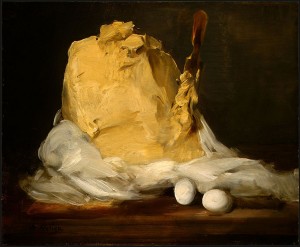
"When they were laid on the table Graham asked fror more butter, which Christman refused to give, much to the annoyance of the former, who threw his oysters into a waste dish." (Image by Antoine Vollon.)
“Old Bob Meets With an Accident” (March 8, 1896): “Henry Young of Flatlands, 93 years of age, known all over the annexed district as Old Bob, met with an accident in Flatlands yesterday afternoon that came within a hair’s breadth of spoiling his prospect of being a centenarian. Old Bob is an oyesterman, and three times a week he may be seen on his yellow wagon, peddling oysters up and down Flatbush Avenue and the side streets. Yesterday afternoon he was just coming to a halt on front of the Ditman residence on Flatbush Avenue, near Avenue C, when a farmer’s wagon, belonging to P.J. Collins of Flatlands, collided with his vehicle. Bob was thrown off his seat with great violence and landed head first in the middle of the car tracks. He was stunned from the shock and unable to rise for several minutes. When he got up he found his wagon a wreck and the farmer’s wagon going up the avenue with the speed of a trolley car. Bob’s horse being a steady animal, stood patiently waiting to see what his master was going to do about it. He left the horse and what was left of the wagon just where they stood and with blood in his white hair, called on Justice Steers to have the driver of the farm wagon arrested.”
••••••••••
“Frozen in His Boat” (January 7, 1893): “Jacob Snyder, an oysterman living in Woodhaven, had a bitter experience on Jamaica Bay Thursday night. His hands, feet and ears were frozen and it is thought amputation of his feet will be necessary. Snyder owns oyster beds at Beach Channel. His grounds have been visited by oyster thieves lately, and on Thursday night the planter, armed with a shot gun, arranged to watch the beds from a rowboat hidden in the thatch, a short distance from the channel. Snyder watched for several hours, taking frequent pulls at a flask of whisky. He fell sleep and did not wake until 3 o’clock, when the storm was at its height. Snyder was benumbed with the cold, but decided to make an attempt to reach the main land. His boat was caught by the wind and blown toward the mouth of the bay. The desperate efforts of the bayman to control the boat were without effect and he became exhausted and lost consciousness. Early yesterday Snyder’s son began a search for his father. The skiff was found on Ruffle Bar. The oysterman lay in the bottom of the boat, still unconscious and nearly frozen to death. A vigorous rubbing partially restored him, but Snyder lost consciousness three times before reaching his home. Physicians were called to attend him and they will make an effort to save his hands.”
From a 1982 Robert Reinhold article in the New York Times, which predicted with stunning accuracy how technology has subsequently transformed our lives, connecting us and allowing for a decentralized flow of information:
“A report commissioned by the National Science Foundation and made public today speculates that by the end of this century electronic information technology will have transformed American home, business, manufacturing, school, family and political life.
The report suggests that one-way and two-way home information systems, called teletext and videotex, will penetrate deeply into daily life, with an effect on society as profound as those of the automobile and commercial television earlier in this century.
It conjured a vision, at once appealing and threatening, of a style of life defined and controlled by videotex terminals throughout the house.” (Thanks Reddit.)
Tags: Robert Reinhold




